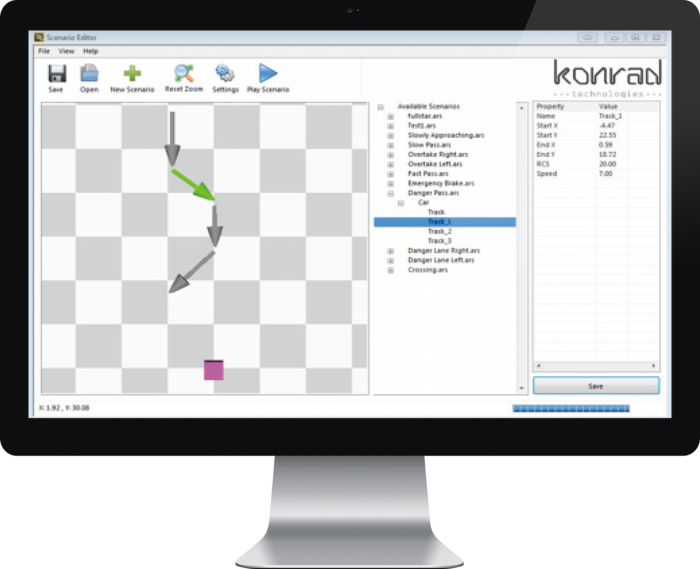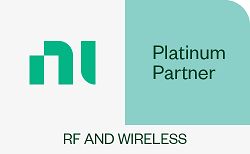Software For Radar Target Simulation
Increased complexity of vehicles has shifted the automotive value chain to trend towards electrification, connectivity and automation in vehicles. Konrad Technologies software for radar target simulation is a critical differentiator in the market today. The software offers the ability to simulate typical driving scenarios in the lab environment. This enables a controlled and reproducible test frame, which is necessary for an objective evaluation of a sensor’s performance.
Benefits
- Perform target simulation and physical measurements with one system
- Automatically test and replay complex driving scenarios
- Control individual target parameters such as RCS, distance, and velocity
- Automated obstacle/scene selection and RF measurements
- Extensible to multiple targets across chassis
- Implement custom obstacle scenarios following NCAP standards
- Ready interface for HIL test with Sensor Fusion
- Plugins for various automotive BUS interfaces: CAN, Ethernet, LIN
- Extensible LabVIEW based software
…All without requiring large space for moving objects or ties to the road!
With the help of our software, users are able to validate backend sensor algorithms. This can range from checking the behavior of simple Adaptive Cruise Control functions to verifying that emergency situations are handled appropriately. Konrad Technologies can draw upon a vast background of experience in order to support your custom applications.
The software makes testing complex driving scenarios easy with the simple graphical editor. Users can draw their desired scenario and edit individual parameters such as RCS or speed via the property view. The scenarios can then be replayed or saved to disk for later retrieval.
Highlights
- Simulate driving scenarios in the lab environment
- Configure and vary target parameters (RCS, distance, velocity) during a scenario
- Synchronize different test system types like Radar, Camera, GNSS and Lidar to perform Sensor Fusion style testing
- Work in a controlled and reproducible test frame
- Quickly switch between target generation and sensor characterization
- Plug-ins to receive target parameters through various interfaces like CAN, Ethernet, LIN, etc. for headless operation
- Scalable and highly extensible solution available in multiple variations
- Customizable graphical user interfaces





